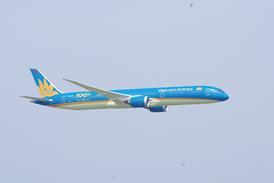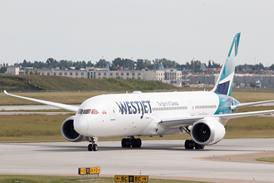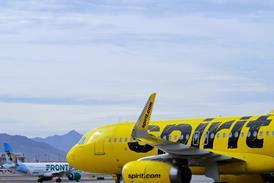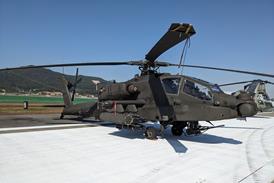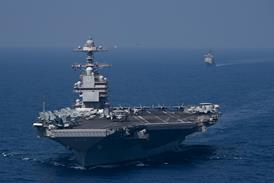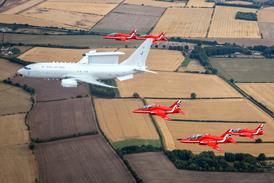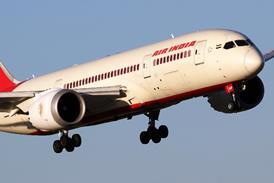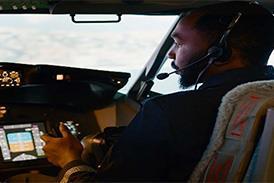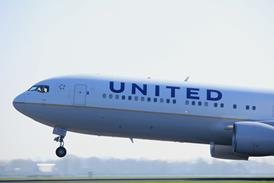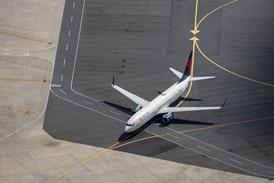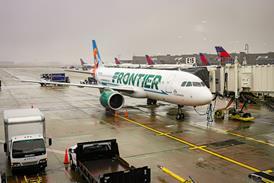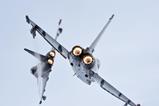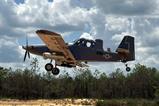The US Air Force’s strategy for fighting in the Indo-Pacific region would face significant challenges during a conflict over Taiwan, possibly resulting in defeat.
That is the conclusion of two scholars who examined the likely outcome of such a confrontation, accounting for the relative strengths and strategic regional composition of the US and Chinese air forces.
“The current US approach for operating airpower in East Asia during a major war against China is likely to fail,” conclude Nicholas Anderson and Daryl Press. “China has enough missiles with sufficient range to blanket whatever regional facilities the United States uses.”
Anderson is assistant professor of international affairs at The George Washington University, while Press directs the Davidson Institute for Global Security at Dartmouth College.
Published in the summer 2025 issue of journal International Security, the pair’s study further concludes the US Air Force is unlikely to overcome its reliance on vulnerable fixed air bases, giving China a distinct advantage amid a conflict.
Titled Access Denied? The Sino-American Contest for Military Primacy in Asia, the paper explores a scenario in which Beijing commits either to a full-scale invasion of Taiwan or a military blockade of the island, with the USA deploying forces to oppose either action.
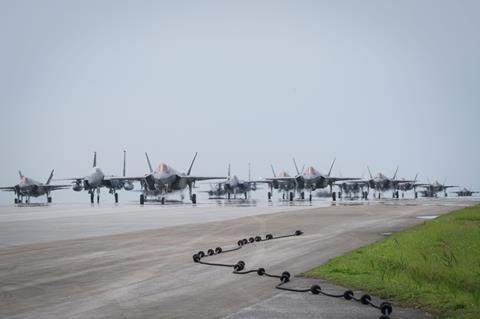
In either case, both sides would need to achieve air superiority over Taiwan and surrounding waters to achieve military and political goals. While the US military would need to achieve this largely by attacking Chinese aircraft patrolling over Taiwan, Beijing would likely use its vast arsenal of missiles to target American and allied jets on the ground.
“Geography constrains US forces to a relatively small number of bases, and with a few exceptions requires the United States to choose between large, sophisticated airfields near China, or smaller, more remote facilities farther away,” the authors write.
“Meanwhile, China’s technological developments are increasing its ability to locate US forces throughout the theatre and strike them with long-range precision conventional weapons,” Press and Anderson add.
Similar conclusions about the vulnerability of Washington’s forward air bases have been reached by numerous think tanks and research groups in recent years, including the Center for Strategic and International Studies, the Stimson Center and the Hudson Institute.
The Pentagon itself reached the same conclusion, with top generals saying the air force can no longer rely on its existing model of large, forward-deployed air bases.
“The USAF no longer has the luxury of projecting power from sanctuary bases,” Major General Christopher Niemi, commander of the USAF Warfare Center, said in 2024.
Recently departed air force chief of staff General David Allvin made similar comments.
While there is little disagreement about base vulnerability, the latest study by Anderson and Press calls into question the effectiveness of the USAF’s plans for responding.
Known as Agile Combat Employment (ACE) within the Pentagon, the concept calls for aircraft to be dispersed across dozens or even hundreds of smaller airfields, rather than concentrated at a small number of large, well-known sites that can be easily targeted and overwhelmed by long-range missiles.
Such barrages would likely destroy significant numbers of US and allied aircraft on the ground, while also cratering runways and damaging base infrastructure.
The ACE concept was derived from Sweden’s Bas 90 system, which featured air strips hidden within the country’s vast forests, with motor highways designated as back-up runways.
The system was developed during the Cold War, when Sweden was not a NATO member and faced the prospect of repelling a Soviet invasion on its own. The Gripen family of multi-role fighters built by Swedish manufacturer Saab were specifically designed with such dispersed operations in mind.
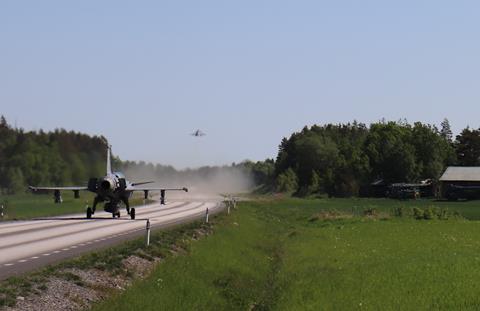
While the US Air Force has worked to build out its own ACE credentials in recent years with Lockheed F-35A road strip landings and large-scale exercises, the Access Denied study finds that dispersed operations are “unlikely to succeed”.
“US aircraft on those smaller bases are more vulnerable to missile attacks,” the authors note. “Shifting US forces among small, vulnerable airfields makes no sense unless the United States heavily degrades China’s regional intelligence, surveillance and reconnaissance (ISR) capabilities and its command and control. Otherwise, China would almost immediately locate and be able to strike US forces after they have moved.”
Despite that pessimistic assessment by the authors, their model predicts dispersion tactics will result in substantially fewer in losses.
When operating only from the Pentagon’s six major bases in Japan and Guam, the USAF could lose up to 424 tactical aircraft out of 450 deployed over a 30-day period, the study projects.
By contrast, dispersion to 15 bases reduced the predicted losses to 330 aircraft, while dispersion to 24 sites saw losses decline further to 299 aircraft. The incorporation of terminal guidance jamming and ballistic missile defences could reduce the number to as low as 201.
There are real-world observations that suggest dispersion can be effective.
Ukraine has been able to successfully operate its new fleet of donated Lockheed Martin F-16 fighters in the war against Russia, in part by shifting operational patterns and landing aircraft at different locations from where they took off.
Of course, Kyiv and Moscow are already engaged in all-out conventional war – a scenario Press and Anderson assume leaders in Washington and Beijing will seek to avoid.
A reliance on the ACE strategy, the authors conclude, will force Washington into a dangerous escalatory cycle, where the choice is either to risk a catastrophic defeat or plunge head-on into direct conflict with China by attacking ISR infrastructure.
“If there is a minor engagement in the Taiwan Strait, US leaders would face great pressure to blind China’s regional ISR, lest US tactical airpower in the theatre be destroyed by a… pre-emptive missile attack,” Anderson and Press conclude.
The pair argue for alternative measures, such as building hundreds of hardened aircraft shelters across the Western Pacific and prioritising deployment of robust missile-defence systems that could offset China’s anti-access capabilities, while reducing the need for the USA to immediately attack Chinese ISR and command nodes.
“Washington has three principal choices,” they write. “Harden airfields, and thereby enhance the resilience of theatre airpower across East Asia; double down on other military capabilities that are less vulnerable to China’s anti-access/area denial systems (eg, attack submarines and long-range bombers); or scale back US geopolitical ambitions and commitments in the region.”
Introducing 300 hardened aircraft shelters, combined with missile defence and dispersing aircraft among 24 bases, could reduce losses to 52 aircraft from an assumed force of 450.
The authors also acknowledge uncertainty about the accuracy of Chinese missiles, and offer a range of predicted losses based on differing levels of effectiveness.
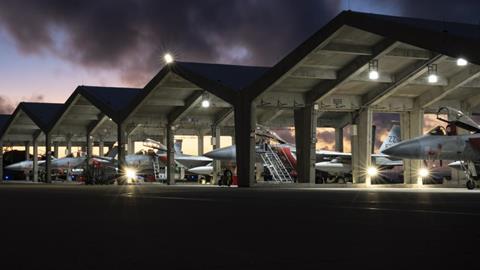
Notably, the study only examines air combat and does not directly explore other key aspects of Taiwan conflict scenario, such as China’s prospects for maintaining a naval blockade or successfully carrying out a massive amphibious landing – both of which would be decisive factors.
However, the authors point out that land-based US air power would be key to any anti-ship strikes, with that capability likely to be degraded by Chinese missile strikes.
While the Access Denied study reaches a more pessimistic conclusion about the outcome of a US air war for Taiwan, the projections seem in line with other studies.
A 2022 war game run by the Center for Strategic and International Studies found that the USA alone could lose 700-800 aircraft – roughly 30% of the country’s total combat fleet – in the most pessimistic scenario.
Both the CSIS war game and the Access Denied study predict the vast majority of US losses would come from missile strikes against aircraft on the ground.
A series of three CSIS games from recent years took a holistic look at various Taiwan conflict scenarios, and all predicted the USA could still prevail against China – but at a decidedly high cost in casualties and equipment losses.
The air-war-focused Access Denied study reaches a more vague assessment.
“The overall outcome of a US-China war remains uncertain. But Beijing’s ability to negate US theatre airpower is a major shift in the military balance, which has implications beyond a war itself,” Anderson and Press conclude.
“The status quo in Asia is untenable,” they add. “Washington plays a central military role in the region, yet it is posturing its forces for defeat. The United States currently appears to be settling for an intolerable middle course, which needs to change.”


